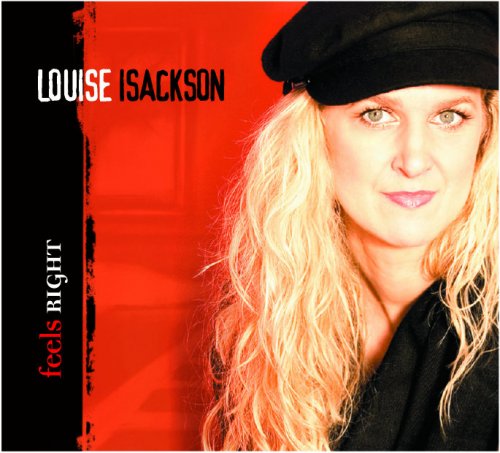La Gioia Armonica - Hebenstreit’s Bach (2022) [Hi-Res]

Artist: La Gioia Armonica
Title: Hebenstreit’s Bach
Year Of Release: 2022
Label: Ramée
Genre: Classical
Quality: FLAC (tracks) / 24bit-192kHz FLAC (tracks+booklet)
Total Time: 66:00
Total Size: 309 MB / 2.46 GB
WebSite: Album Preview
Tracklist:Title: Hebenstreit’s Bach
Year Of Release: 2022
Label: Ramée
Genre: Classical
Quality: FLAC (tracks) / 24bit-192kHz FLAC (tracks+booklet)
Total Time: 66:00
Total Size: 309 MB / 2.46 GB
WebSite: Album Preview
1. Violin Sonata in G Major, BWV 1019 (Arr. for Dulcimer and Organ by Margit Übellacker and Jürgen Banholzer): I. Allegro (4:04)
2. Violin Sonata in G Major, BWV 1019 (Arr. for Dulcimer and Organ by Margit Übellacker and Jürgen Banholzer): II. Largo (1:56)
3. Violin Sonata in G Major, BWV 1019 (Arr. for Organ by Jürgen Banholzer): III. Allegro (5:09)
4. Violin Sonata in G Major, BWV 1019 (Arr. for Dulcimer and Organ by Margit Übellacker and Jürgen Banholzer): IV. Adagio (3:16)
5. Violin Sonata in G Major, BWV 1019 (Arr. for Dulcimer and Organ by Margit Übellacker and Jürgen Banholzer): V. Allegro (3:59)
6. Violin Sonata in E Minor, BWV 1023 (Arr. for Dulcimer and Organ by Margit Übellacker and Jürgen Banholzer): I. [...] (1:48)
7. Violin Sonata in E Minor, BWV 1023 (Arr. for Dulcimer and Organ by Margit Übellacker and Jürgen Banholzer): II. Adagio ma non tanto (2:41)
8. Violin Sonata in E Minor, BWV 1023 (Arr. for Dulcimer and Organ by Margit Übellacker and Jürgen Banholzer): III. Allemande (4:27)
9. Violin Sonata in E Minor, BWV 1023 (Arr. for Dulcimer and Organ by Margit Übellacker and Jürgen Banholzer): IV. Gigue (3:14)
10. Cello Suite No. 3 in C Major, BWV 1009: IV. Sarabande (Arr. for Dulcimer by Margit Übellacker) (3:29)
11. Violin Partita No.3 in E Major, BWV 1006: I. Preludio (Arr. for Dulcimer by Margit Übellacker) (4:50)
12. Violin Sonata in A Major, BWV 1015 (Arr. for Dulcimer and Organ by Margit Übellacker and Jürgen Banholzer): I. [Dolce] (3:00)
13. Violin Sonata in A Major, BWV 1015 (Arr. for Dulcimer and Organ by Margit Übellacker and Jürgen Banholzer): II. Allegro assai (3:41)
14. Violin Sonata in A Major, BWV 1015 (Arr. for Dulcimer and Organ by Margit Übellacker and Jürgen Banholzer): III. Andante un poco (2:57)
15. Violin Sonata in A Major, BWV 1015 (Arr. for Dulcimer and Organ by Margit Übellacker and Jürgen Banholzer): IV. Presto (5:22)
16. Cello Suite No. 1 in G Major, BWV 1007: I. Prelude (Arr. for Dulcimer by Margit Übellacker) (3:07)
17. Violin Sonata in G Major, BWV 1021 (Arr. for Dulcimer and Organ by Margit Übellacker and Jürgen Banholzer): I. Adagio (3:49)
18. Violin Sonata in G Major, BWV 1021 (Arr. for Dulcimer and Organ by Margit Übellacker and Jürgen Banholzer): II. Vivace (1:16)
19. Violin Sonata in G Major, BWV 1021 (Arr. for Dulcimer and Organ by Margit Übellacker and Jürgen Banholzer): III. Largo (2:18)
20. Violin Sonata in G Major, BWV 1021 (Arr. for Dulcimer and Organ by Margit Übellacker and Jürgen Banholzer): IV. Presto (1:46)
Johann Sebastian Bach was certainly familiar with the pantaleon – a large hammered dulcimer with a wide range and full chromatic scale. Bach’s contemporary Pantaleon Hebenstreit had developed the instrument, through which he gained international renown and became one of the best-paid Dresden court musicians. The instrument enjoyed great popularity in the 18th century and was an important precursor of the fortepiano, its younger brother.
Bach may have heard Hebenstreit with his pantaleon himself, as he knew several court musicians of the Dresden orchestra personally and also performed with some of them. Whilst we cannot know if they had met in reality, our imagination has nonetheless been much exercised. What would Bach have put on his famous colleague's music stand? Very little music written for the pantaleon has survived, although the instrument’s use in the court orchestras of Vienna and Dresden suggests that works for the harpsichord and for the violin in particular could have served for arrangements and improvisations. It is hard to imagine that Bach would have objected to a virtuoso like Hebenstreit adapting his Violin Sonatas for the pantaleon.
Bach may have heard Hebenstreit with his pantaleon himself, as he knew several court musicians of the Dresden orchestra personally and also performed with some of them. Whilst we cannot know if they had met in reality, our imagination has nonetheless been much exercised. What would Bach have put on his famous colleague's music stand? Very little music written for the pantaleon has survived, although the instrument’s use in the court orchestras of Vienna and Dresden suggests that works for the harpsichord and for the violin in particular could have served for arrangements and improvisations. It is hard to imagine that Bach would have objected to a virtuoso like Hebenstreit adapting his Violin Sonatas for the pantaleon.



![Coco Chatru Quartet - Lost Christmas (2025) [Hi-Res] Coco Chatru Quartet - Lost Christmas (2025) [Hi-Res]](https://www.dibpic.com/uploads/posts/2025-12/1765719561_coco-chatru-quartet-lost-christmas-2025.jpg)


![Tomasz Stańko, Tomasz Szukalski, Dave Holland & Edward Vesala - Balladyna (1976/2025) [Hi-Res] Tomasz Stańko, Tomasz Szukalski, Dave Holland & Edward Vesala - Balladyna (1976/2025) [Hi-Res]](https://www.dibpic.com/uploads/posts/2025-12/1765717548_cover.jpg)
![Amira Kheir - Black Diamonds (2025) [Hi-Res] Amira Kheir - Black Diamonds (2025) [Hi-Res]](https://www.dibpic.com/uploads/posts/2025-12/1765640459_tf7wrmc9lqmqc_600.jpg)
